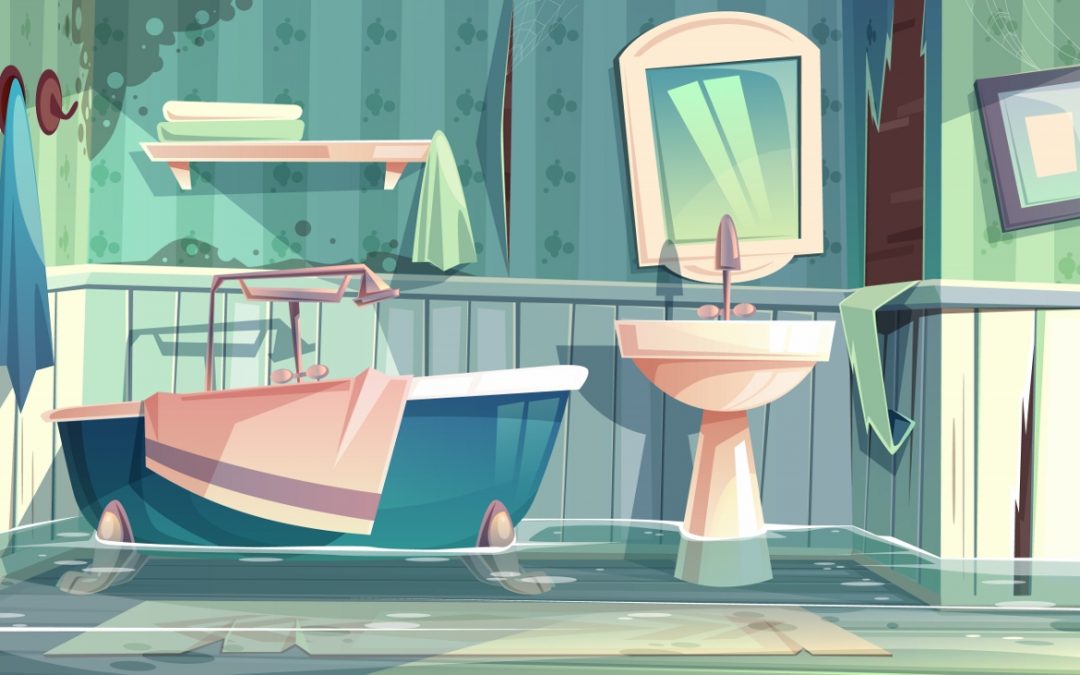Water damage is a costly and emotionally (and physically) draining situation that can impact homeowners when they least expect it. Whether the cause is flooding from a rainstorm, a pipe break, or a roof leak, dealing with the aftermath of water damage can take significant time and energy, and the worst part is that you’re up against a ticking clock: the potential formation of mold. The good news is that there are steps you can take right when the water damage event occurs that can help with recovery. Let’s take a look:
- Electrical Safety Water damage can take place anywhere, from rooms that have nothing in it, to rooms with tons of important things in it — and it can also happen near or on wiring and electrical outlets. So your first step should be to secure the electricity in that area by turning off the circuit breakers that power wiring near the leak. You’ll need to shut down as many circuit breakers as necessary given the size of the water incident; so if the water damage comes from a major pipe break, you may need to shut down a circuit panel. On the other hand, if a flooding event has occurred and you’re knee-deep in water inside your home, take precaution and wait until your utility company has completely removed the electrical meter before you enter flooded areas. (If you’re unsure about how to handle any part of this step, consult with a licensed electrician or your electric utility.)
- 2) Make the water stop Sounds obvious, but you’d be surprised how many homeowners delay on this step. Identify the source of the water coming into your home (or, in the case of a pipe leak, water being somewhere it shouldn’t be) and stop its flow. Time is of the essence when it comes to water damage and its ripple effects. If needed, turn off your home’s main water shut-off valve using a water key, which you can buy at a hardware store. The shut-off valve is often located in the basement or outside the home, near the water meter. (Tip: keep the shut-off valve lubricated and free of rust, so it turns easily when you need it to.)
- Report the damage Contact your homeowners insurance to get help according to the coverage you’ve purchased. Bear in mind that there are many types of coverage, and that what is covered in the event of a burst pipe may be different form the coverage in the event of a natural flood. (Be sure to carefully consider the type of insurance coverage you may need for your area and the health of your home before you have a water damage incident.) Be sure to also take lots of photos of the water damage you see around the house, to aid any claims you need to make.
- Get to work Depending on the extent of the water damage and the nature of the event that caused it, you may want to do the water damage cleanup tasks yourself, or you may want to ask for/hire help. Either way, as stated before, time is of the essence. Mishandled moisture can lead to mold growth, which can be a tricky, unsafe, and unwieldy problem. Water damage remediation companies can help.
- Dry things up If there’s standing water, get rid of it using an electric pump or a shop vac (Northside Plumbing can help with this!). Remove water damaged items from the home and determine if they’re salvageable. Be prepared to lose things like carpet-related flooring, electronics, and paper and food products. If you think you can salvage types of furniture, know that they’ll need immediate attention from experts. Turn on fans and open windows to accelerate the drying out of the damaged area.
These are a few steps to take within the first 24 hours of a water damage event. Remember, if you have plumbing issues, your friends at Northside Plumbing can help.



Thank you for the comment about time being incredibly important when stopping water damage and its ripple effects. My sister is worried about possible having water damage in her home from a busted pipe. I will be sure to forward this to her so she can find a restoration company ASAP.
Thank you for noting that a homeowner should stop the source of water before cleanup! Even if floodwater seem to be receding, a broken pipe or entryways into the home can bring more water if you don’t close them off. Great info.
Inspecting carpet padding is so vital for water damage repair in a home. Top layers of carpeting can be dry but the padding can be damp and ready for mold and mildew growth. Thanks for sharing.